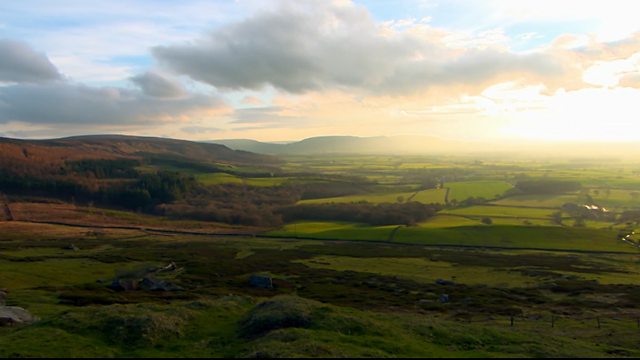Archaeology at Hinton Ampner – Countryfile delves into the rich tapestry of Britain’s past, unearthing the secrets hidden beneath its verdant landscapes. From the echoes of Roman currency to the remnants of Stone Age tools and the skeletal whispers of prehistoric life, the countryside is a treasure trove of ancient marvels waiting to be discovered.
This week, Anita Rani embarks on a fascinating journey to Hinton Ampner, a quintessentially English medieval village nestled in the serene countryside near Winchester, Hampshire. This location is not just a picturesque postcard; it is a historical palimpsest, bearing the marks of Neolithic and Bronze Age settlers who once called it home. With its barrows and settlements, Hinton Ampner stands as a testament to the myriad ways humans have interacted with this land over thousands of years, culminating in the construction of a Georgian manor house that is now under the stewardship of the National Trust.
As the Hinton Ampner estate undergoes a transformative process, converting its grasslands and farmlands into diverse ecosystems of woodlands and wildflower meadows, a careful and thorough investigation is underway. This meticulous archaeological examination ensures that the transition respects the land’s rich historical legacy, safeguarding any artefacts lying beneath its surface.
Anita, equipped with her boots and boundless curiosity, joins forces with a passionate group of volunteers. Their mission is clear: to uncover new insights into the daily lives of those who shaped the landscape through the ages. Guided by James Brown, the National Trust’s regional archaeologist, and Geoff Buss, the dedicated lead volunteer of the archaeology team at Hinton Ampner, this enthusiastic ‘volunteer army’ is on a quest to piece together the human story embedded in the estate.
Their discoveries, some dating back 10,000 years, are the result of painstaking efforts, combing through soil and employing advanced technologies like Lidar surveying. Will Anita, with guidance from these seasoned explorers, unearth a piece of history on her very first try?
Countryfile – Archaeology at Hinton Ampner
Our journey through Hinton Ampner also provides a unique opportunity to delve into the Countryfile archives, where we revisit some of the most remarkable historic discoveries across the UK. We retrace John Craven’s uncovering of a 3,000-year-old treasure cache, miraculously preserved by a wildfire in Cambridgeshire. Margherita Taylor takes us through the secretive tunnels from the First World War hidden beneath Sherwood’s ancient oaks. Charlotte Smith shares the thrill of discovering artefacts at the Roman fort of Vindolanda, near Hadrian’s Wall. And we recount the adventure of a gemmologist and jeweler in Whitby, who scours the rugged coastlines for the elusive black jet, a gemstone as mysterious as it is beautiful.
Each story, each find, brings us closer to understanding the complex tapestry of human history interwoven with the natural world. As Anita and the team of volunteers at Hinton Ampner continue their search, they not only uncover the physical traces of the past but also reconnect us with the countless generations who have shaped the landscape we cherish today. Through their efforts, we are reminded of the enduring bond between humanity and the earth, a relationship forged through millennia of shared history and mutual stewardship.
F.A.Q. on “Countryfile – Archaeology at Hinton Ampner”
Q1: What is the focus of the “Countryfile” episode at Hinton Ampner?
A.: This “Countryfile” episode explores the rich archaeological heritage of Hinton Ampner, a medieval village in Hampshire, England. It delves into the area’s history, from Neolithic and Bronze Age settlements to its Georgian manor house, showcasing the extensive efforts to uncover and preserve the artifacts that narrate the story of human interaction with this landscape over millennia.
Q2: Who leads the archaeological investigation at Hinton Ampner, and what are their goals?
A.: The archaeological project at Hinton Ampner is spearheaded by James Brown, the National Trust’s regional archaeologist, and Geoff Buss, the lead volunteer of the archaeology team. Their goal is to uncover insights into the daily lives of the people who shaped the landscape through the ages, ensuring the estate’s transformation into woodlands and meadows respects its historical legacy.
Q3: What kinds of discoveries have been made at Hinton Ampner?
A.: Discoveries at Hinton Ampner span 10,000 years, including Roman currency, Stone Age tools, and remnants of prehistoric life. These finds result from detailed excavations and advanced technologies like Lidar surveying, painting a vivid picture of the area’s past inhabitants and their lifestyles.
Q4: How does the episode contribute to understanding Britain’s historical and natural heritage?
A.: By highlighting the archaeological findings at Hinton Ampner and revisiting significant historical discoveries across the UK, this “Countryfile” episode enriches our understanding of Britain’s historical and natural heritage. It emphasizes the enduring bond between humanity and the earth, showcasing how each generation has left its mark on the landscape.
Q5: What role do volunteers play in the archaeological efforts at Hinton Ampner?
A.: Volunteers play a crucial role in the archaeological efforts at Hinton Ampner, working alongside professionals to excavate, analyze, and preserve artifacts. Their dedication and enthusiasm contribute significantly to uncovering the estate’s historical secrets, demonstrating the community’s commitment to safeguarding its rich heritage for future generations.
Q6: How does the episode’s exploration of Hinton Ampner’s past contribute to the National Trust’s goals?
A.: The exploration of Hinton Ampner’s past aligns with the National Trust’s goals by highlighting the importance of preserving historical sites and landscapes. It showcases the Trust’s efforts to maintain the estate’s biodiversity while respecting its archaeological significance, underlining the balance between conservation and historical research. This episode serves as an educational tool, raising awareness and fostering appreciation for Britain’s cultural and environmental legacy.




